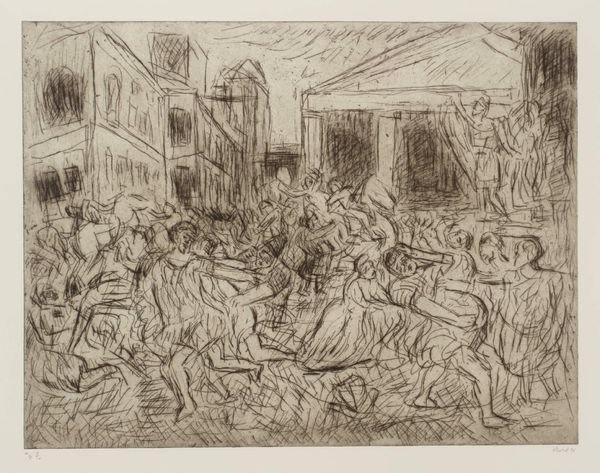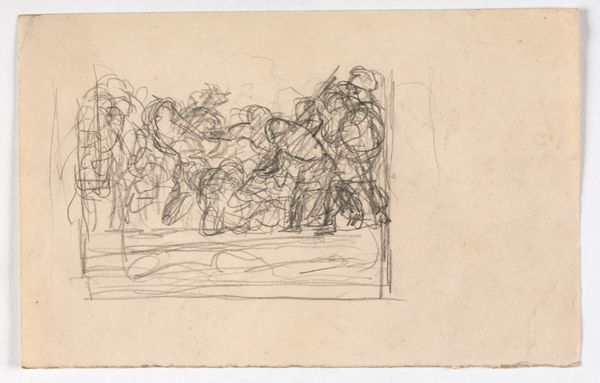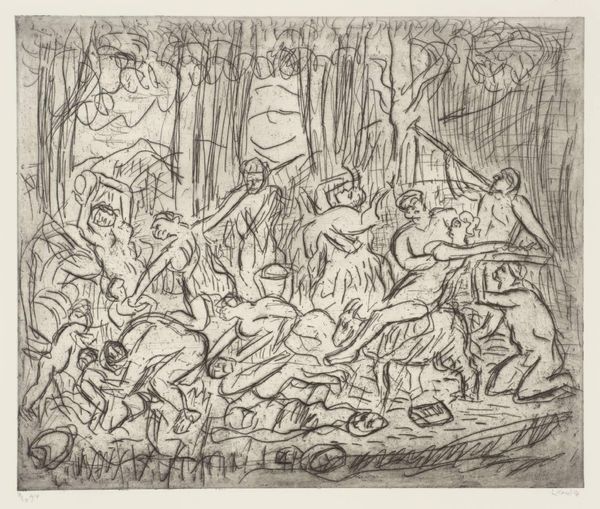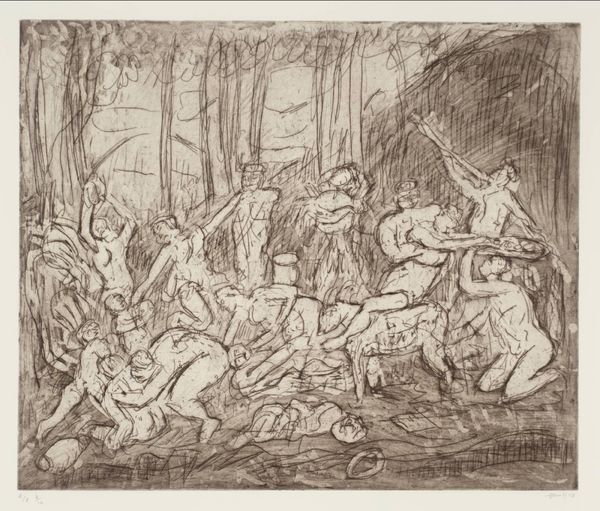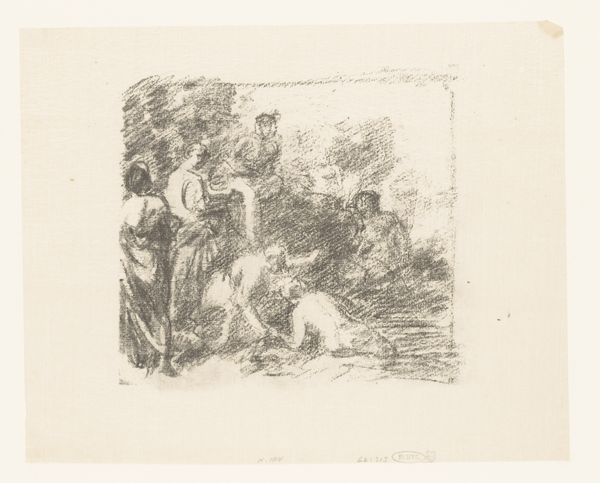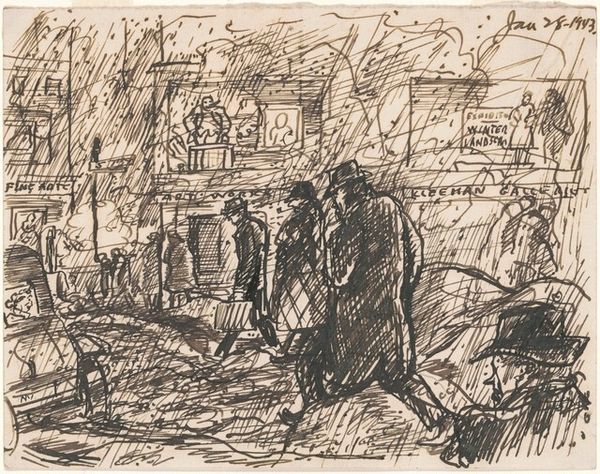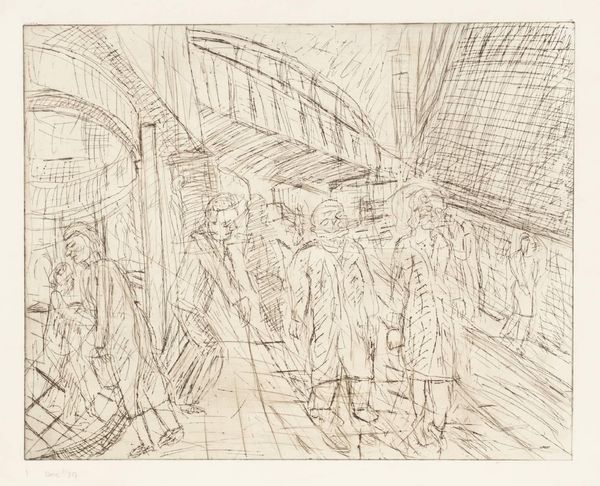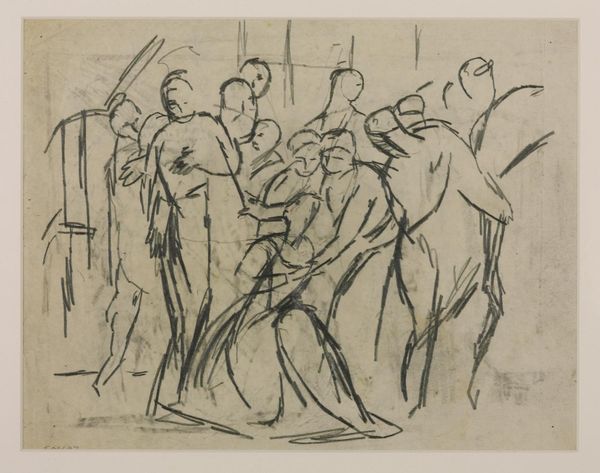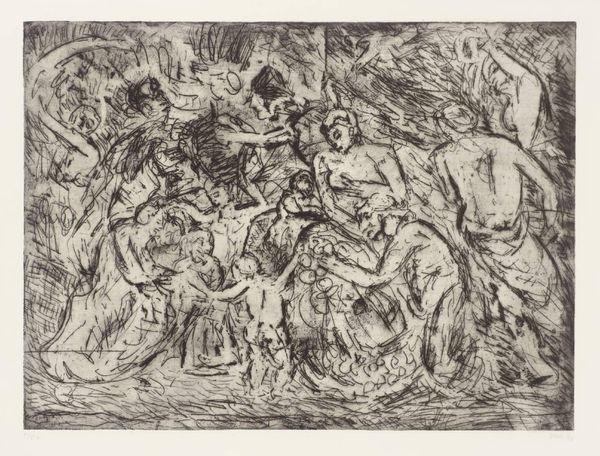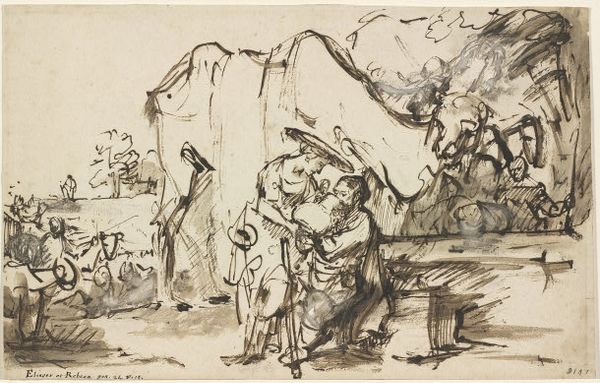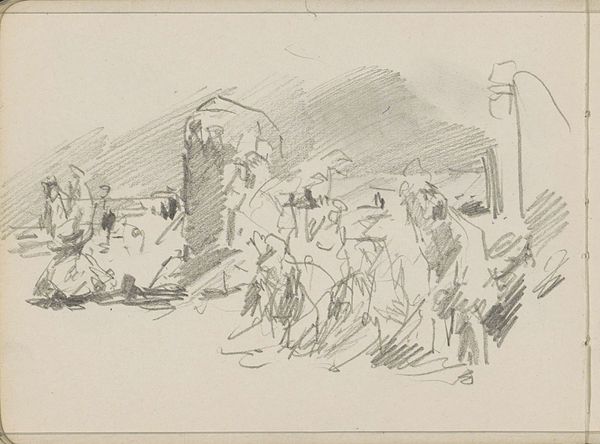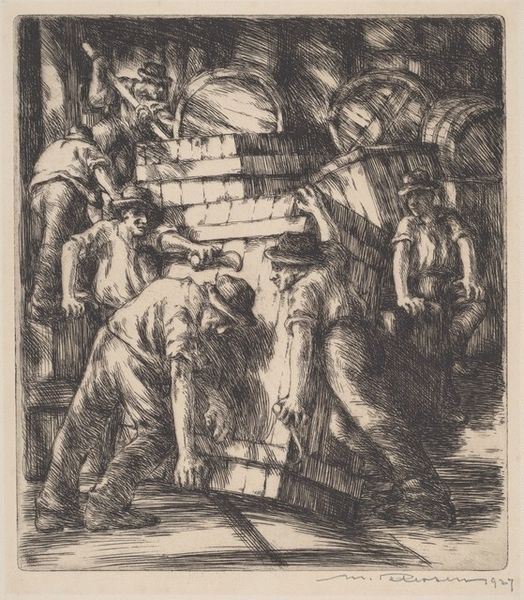
Dimensions: image: 141 x 206 mm
Copyright: © Leon Kossoff | CC-BY-NC-ND 4.0 DEED, Photo: Tate
Curator: This etching by Leon Kossoff, held in the Tate Collections, is titled "Rebekha Quenching the Thirst of Eliezer at the Well." Editor: It's incredibly dynamic; the flurry of lines evokes a real sense of activity, a sort of chaotic generosity. Curator: Yes, the very act of drawing, the labor involved, is evident in the visible network of etched lines. He seems to focus on the common, everyday act of quenching thirst. Editor: And that act, watering the camel, becomes symbolic of Rebekah's kindness and her destiny. Water, of course, is a potent symbol of life and renewal. Curator: Absolutely, and the printmaking process itself—the deliberate and repeated biting of the plate with acid—mirrors that process of transformation. Editor: Seeing it now, it feels like Kossoff's lines aren't just describing a scene but hinting at a deeper narrative about destiny and compassion. Curator: The deliberate lack of refinement points to the sheer graft involved in its production, almost honouring the production of this particular scene. Editor: The scene itself feels like a meditation on how small acts can ripple outwards. Curator: Yes, it's a testament to the profound stories that can be found in the everyday. Editor: It does invite us to look closer at the symbolic weight of simple actions.
Comments
tate 7 months ago
⋮
http://www.tate.org.uk/art/artworks/kossoff-rebekha-quenching-the-thirst-of-eliezer-at-the-well-p11705
Join the conversation
Join millions of artists and users on Artera today and experience the ultimate creative platform.
tate 7 months ago
⋮
This print is one of many etchings executed by Leon Kossoff in response to, and literally in the presence of, oil paintings by old masters; in this case Eliezer and Rebecca at the Well, circa 1650-55, by Nicolas Poussin (1594-1665), owned by the Fitzwilliam Museum, Cambridge. Tate owns the only artist’s proof of this print.
